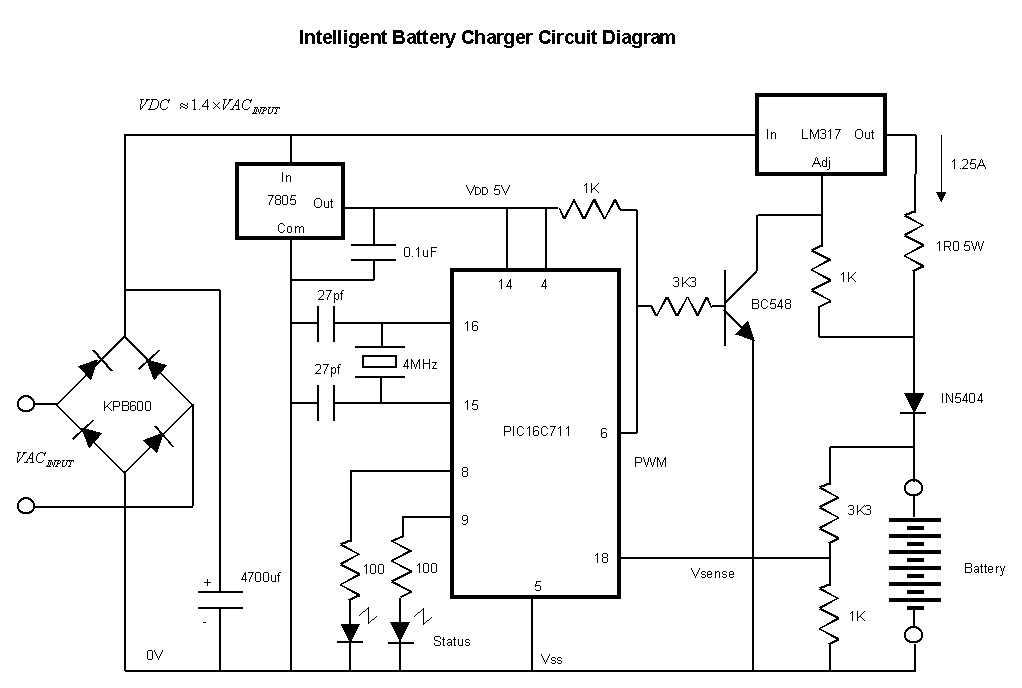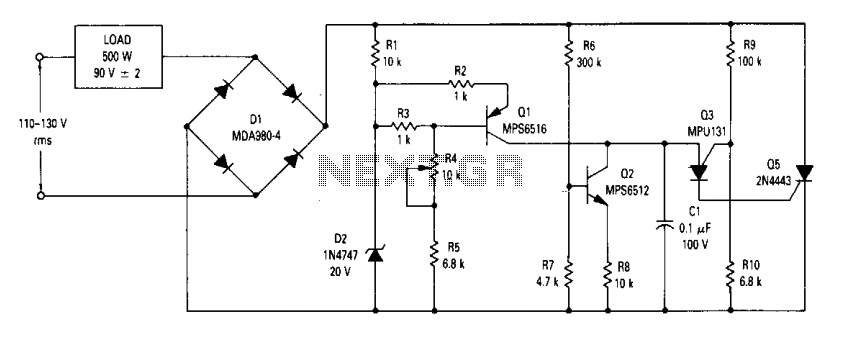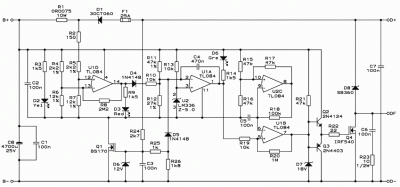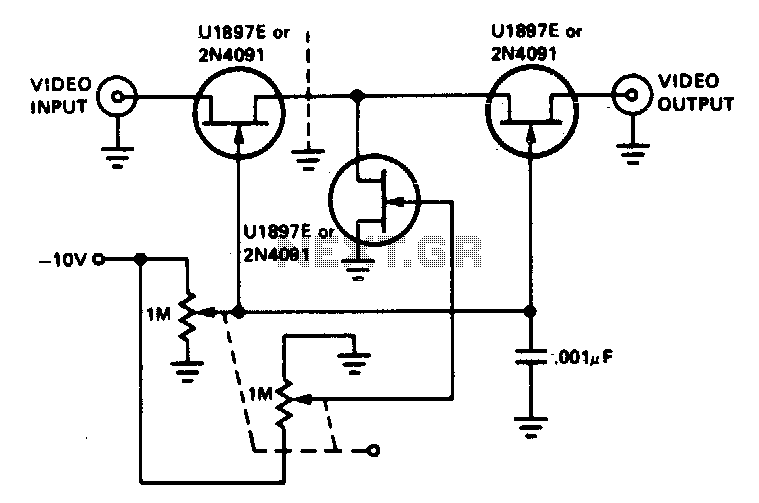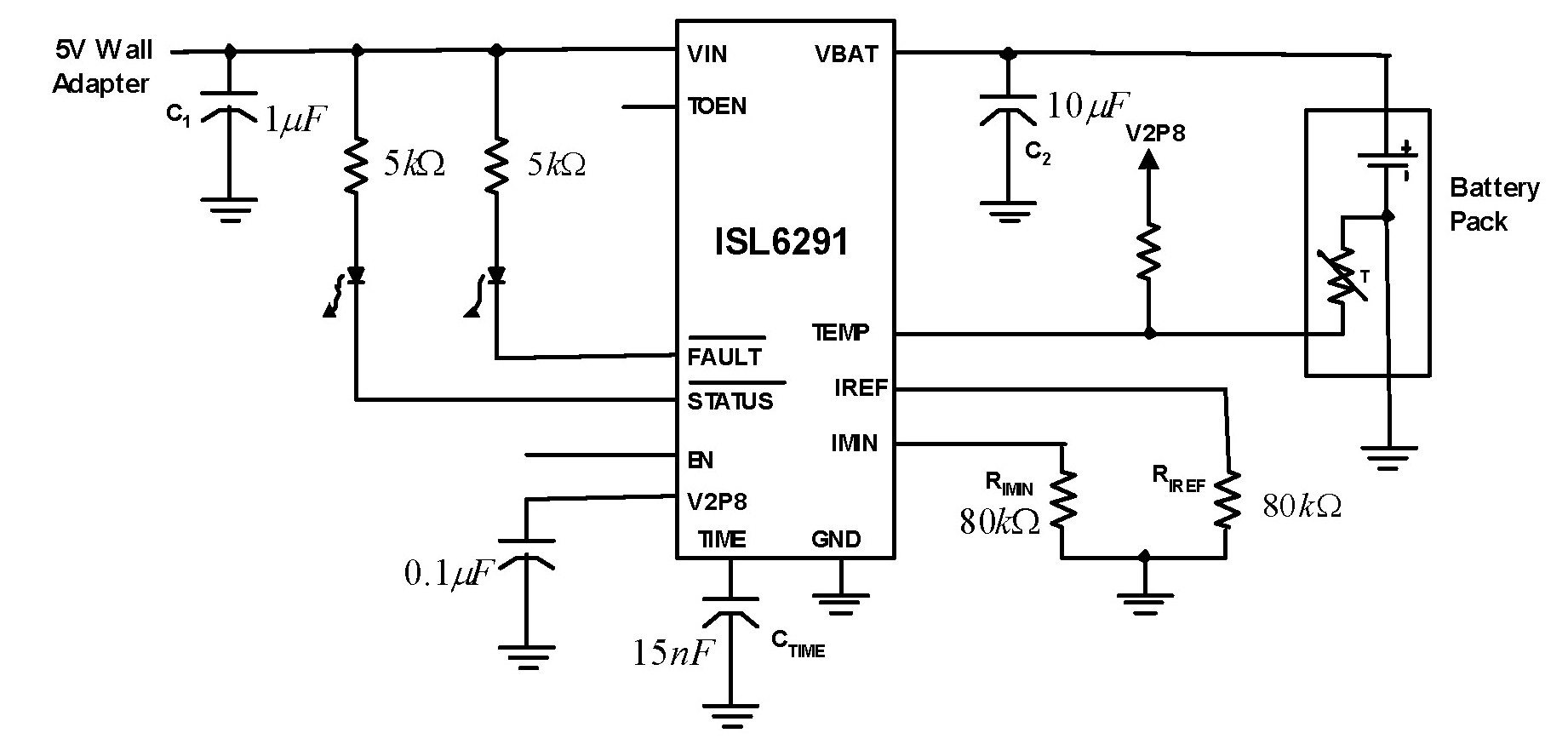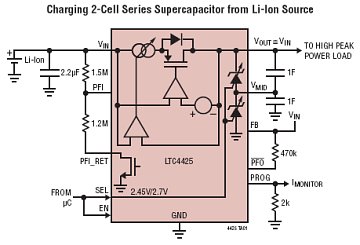
Precision battery voltage monitor
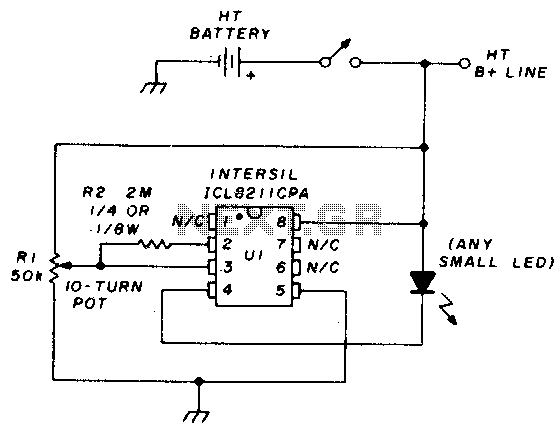
The precision voltage-monitor chip features a temperature-compensated voltage reference. Resistor R1 divides the battery voltage to align with the built-in reference voltage of IC1 (15 volts). When the voltage at pin 3 drops below 15 volts, pin 4 provides a constant current of 7 mA to illuminate a small LED. Additionally, resistor R2 introduces approximately 0 volts of hysteresis. This hysteresis prevents the LED from flickering on and off when the monitored voltage fluctuates around the set point, which may occur during voice peaks in receive mode.
The described circuit operates as a voltage monitoring system that utilizes a precision voltage-monitoring integrated circuit (IC) designed for reliable voltage detection. The primary function of this circuit is to monitor the battery voltage and activate an LED indicator when the voltage falls below a predetermined threshold of 15 volts.
The circuit's operation begins with the voltage supplied from the battery being divided down by resistor R1. This division is crucial as it ensures that the voltage level presented to pin 3 of the IC matches the internal reference voltage of 15 volts. Should the voltage drop below this reference level, the IC responds by activating pin 4, which sources a constant current of 7 mA. This current is sufficient to power a small LED, providing a visual indication of the low voltage condition.
Incorporating resistor R2 into the circuit introduces hysteresis, a critical design feature that stabilizes the LED operation. Hysteresis prevents rapid toggling of the LED state, which could occur if the monitored voltage hovers around the threshold level. The introduction of approximately 0 volts of hysteresis ensures that the LED remains lit until the voltage significantly recovers above the threshold, thus preventing flickering during transient conditions such as audio peaks.
This design is particularly advantageous in applications where voltage levels are subject to fluctuations, such as in audio or communication devices. By ensuring stable LED operation, the circuit enhances user experience and provides reliable feedback regarding the voltage status of the system. Overall, the precision voltage-monitor chip, along with the resistive components, forms an effective solution for monitoring battery voltage with visual indication, while mitigating potential issues associated with voltage variability.The precision voltage-monitor chip contains a temperature-compensated voltage reference. R1 divides down the battery voltage to match the built-in reference voltage of ICl (15 volts). When the voltage at pin 3 falls below 15 volts, pin 4 supplies a constant current of 7 mA to drive a small LED About 0 volt of hysteresis is added with R2. Without hysteresis, the LED could flicker on and off when the monitored voltage varies around the set point, as might be the case on voice peaks during receive.
The described circuit operates as a voltage monitoring system that utilizes a precision voltage-monitoring integrated circuit (IC) designed for reliable voltage detection. The primary function of this circuit is to monitor the battery voltage and activate an LED indicator when the voltage falls below a predetermined threshold of 15 volts.
The circuit's operation begins with the voltage supplied from the battery being divided down by resistor R1. This division is crucial as it ensures that the voltage level presented to pin 3 of the IC matches the internal reference voltage of 15 volts. Should the voltage drop below this reference level, the IC responds by activating pin 4, which sources a constant current of 7 mA. This current is sufficient to power a small LED, providing a visual indication of the low voltage condition.
Incorporating resistor R2 into the circuit introduces hysteresis, a critical design feature that stabilizes the LED operation. Hysteresis prevents rapid toggling of the LED state, which could occur if the monitored voltage hovers around the threshold level. The introduction of approximately 0 volts of hysteresis ensures that the LED remains lit until the voltage significantly recovers above the threshold, thus preventing flickering during transient conditions such as audio peaks.
This design is particularly advantageous in applications where voltage levels are subject to fluctuations, such as in audio or communication devices. By ensuring stable LED operation, the circuit enhances user experience and provides reliable feedback regarding the voltage status of the system. Overall, the precision voltage-monitor chip, along with the resistive components, forms an effective solution for monitoring battery voltage with visual indication, while mitigating potential issues associated with voltage variability.The precision voltage-monitor chip contains a temperature-compensated voltage reference. R1 divides down the battery voltage to match the built-in reference voltage of ICl (15 volts). When the voltage at pin 3 falls below 15 volts, pin 4 supplies a constant current of 7 mA to drive a small LED About 0 volt of hysteresis is added with R2. Without hysteresis, the LED could flicker on and off when the monitored voltage varies around the set point, as might be the case on voice peaks during receive.
